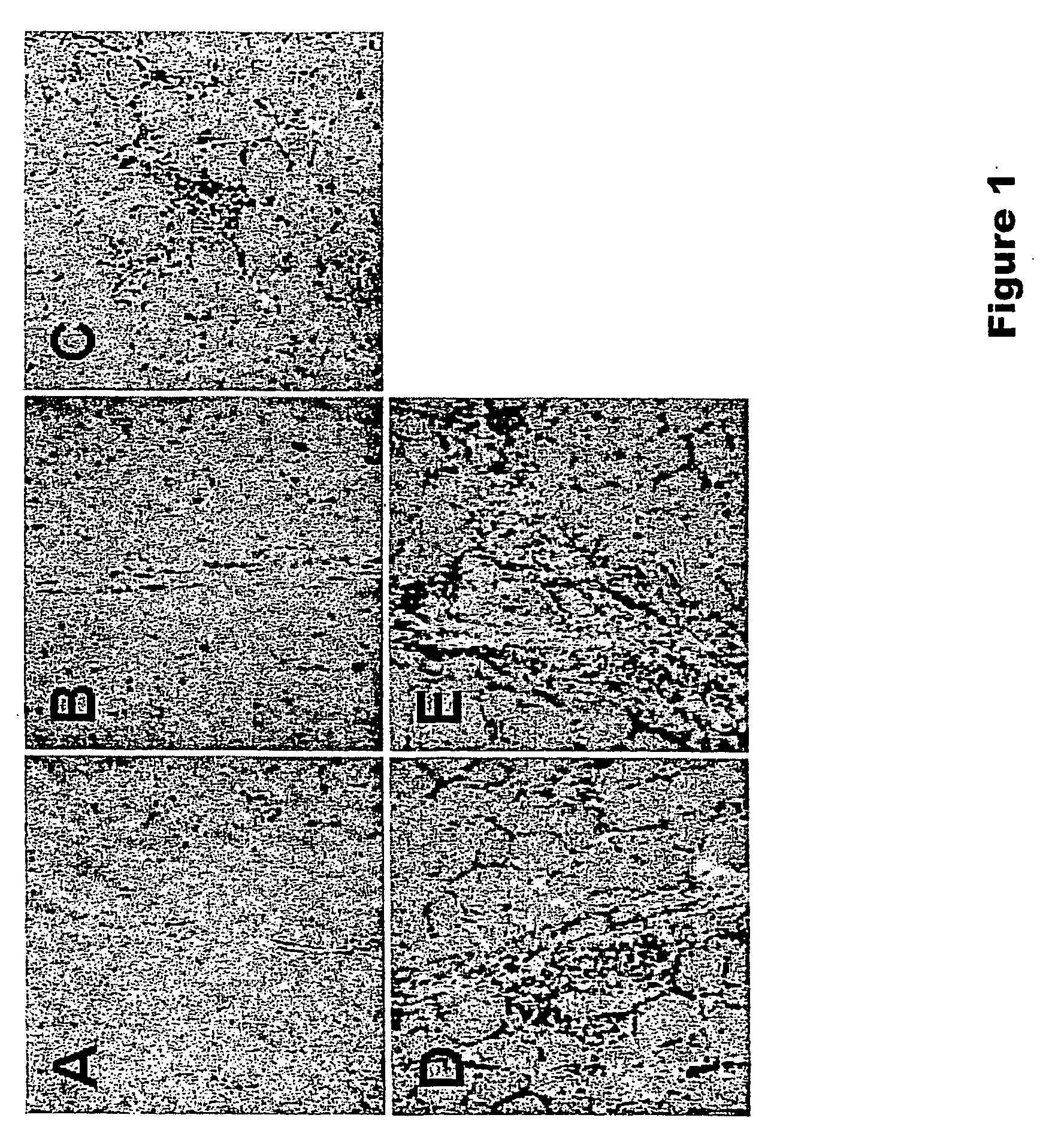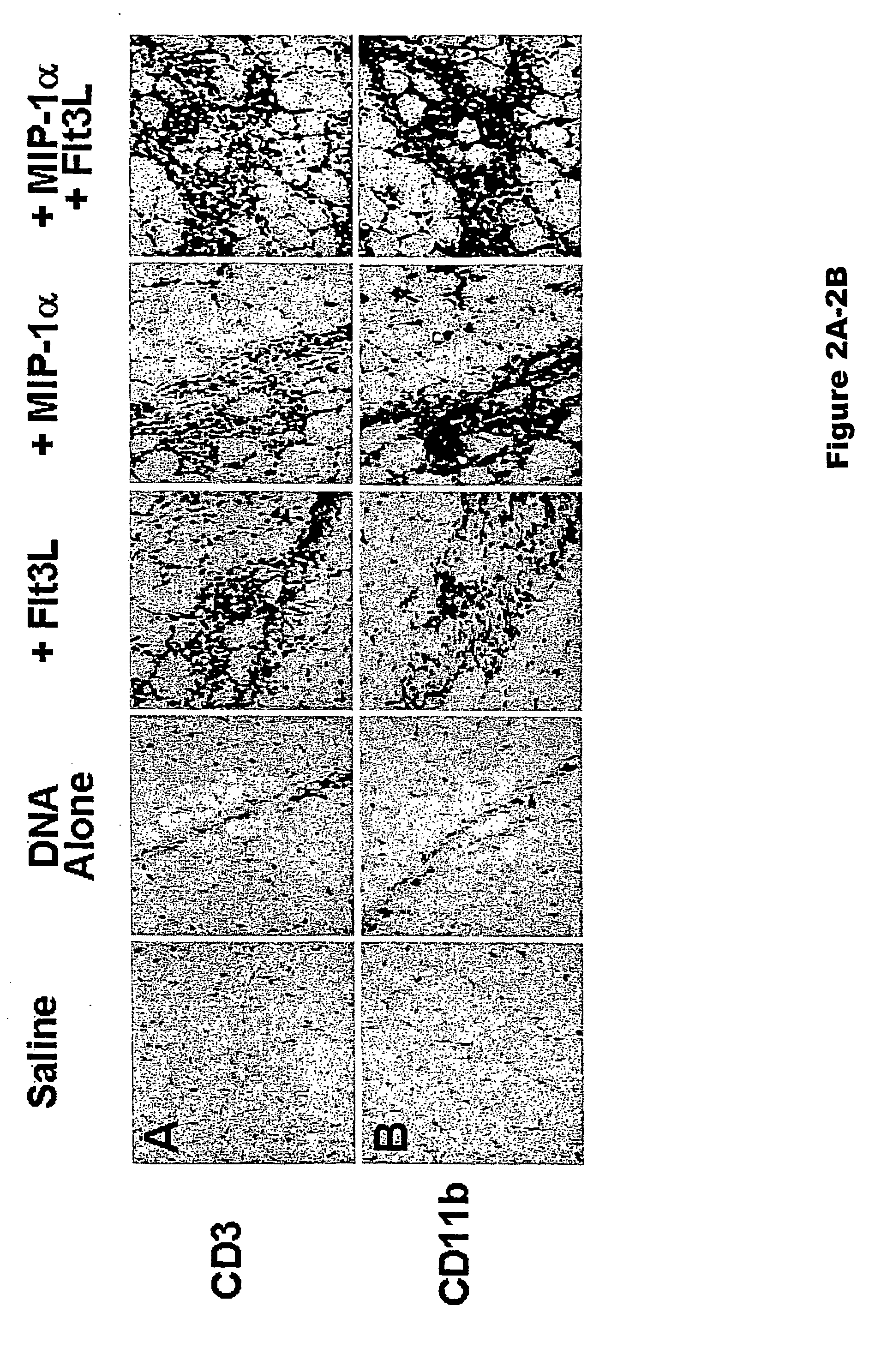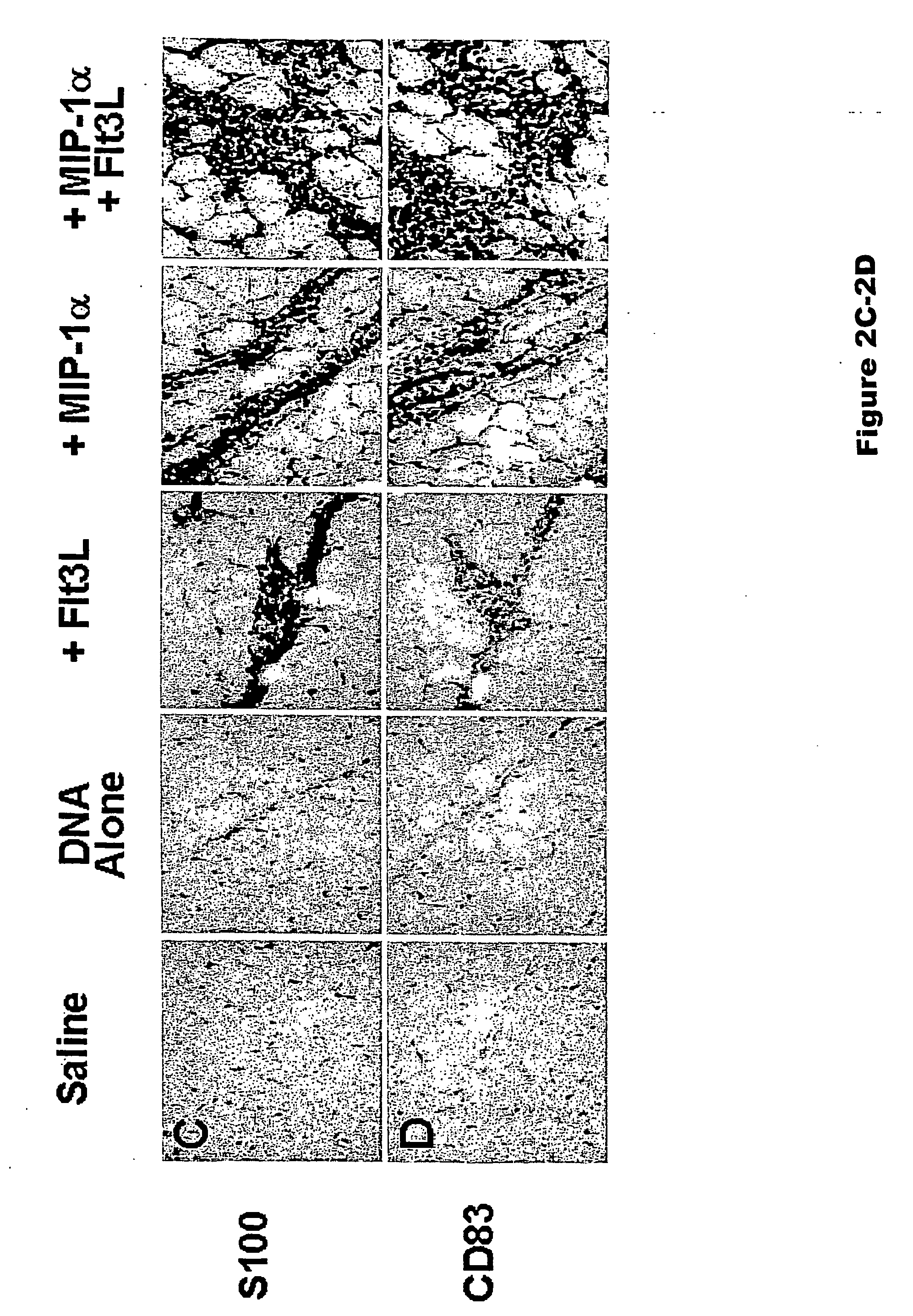Adjuvants Of Immune Response
- Summary
- Abstract
- Description
- Claims
- Application Information
AI Technical Summary
Benefits of technology
Problems solved by technology
Method used
Image
Examples
example 1
Plasmid MIP-1α and Plasmid Flt3L Recruit and Expand DCs at the Site of Inoculation
[0075] Studies were initiated to determine whether codelivering DC-specific chemotactic and growth factors with a plasmid DNA vaccine would lead to increased recruitment and expansion of DCs at the site of vaccine inoculation. We assessed the extent and nature of local cellular inflammatory infiltrates following intramuscular injection of plasmid DNA vaccines with or without plasmids expressing MIP-1 a and Flt3L. Groups of Balb / c mice (n=4 / group) were immunized i.m. with sterile saline or 50 μg plasmid DNA vaccine expressing HIV-1 IIIB Env gp120 (Barouch et al., J. Immunol. 168:562-568 (2002)). Certain DNA vaccinated groups were coimmunized with 50 μg plasmid Flt3L, 50 μg plasmid MIP-1α, or both 50 μg plasmid MIP-1α and 50 μg plasmid Flt3L. Sufficient sham plasmid was included to keep the total dose of DNA per animal constant. The injected muscles were excised on day 7 following immunization, frozen i...
example 2
MIP-1α, Flt3L, and GM-CSF Synergistically Increase DNA Vaccine Immune Response
[0081] The ability of Flt3L, GM-CSF, and MIP-1α to augment T cell responses elicited by a DNA vaccine was investigated in mice, using a model vaccine encoding the HIV-1 Env IIIB gp120 protein. Balb / c mice were immunized with: a sham plasmid vaccine or a gp120 plasmid vaccine, which was administered alone or in combination with MIP-1α; MIP-1α and GM-CSF; Flt3L; MIP-1α and Flt3L; MIP-1α, Flt3L, and GM-CSF (FIG. 4). Each of these adjuvants was delivered by means of a plasmid.
[0082] Mice were primed intramuscularly with sham plasmid DNA, gp120 DNA vaccine alone, or gp120 DNA vaccine with or without plasmid MIP-1α and Flt3L. 50 μg of each plasmid was administered with sufficient sham plasmid DNA to keep the total DNA dose constant (e.g., at 150 μg DNA per animal). All plasmids were mixed together and delivered as 50 μl injections in the quadriceps. At week 8, mice were boosted with 50 μg sham plasmid DNA or 5...
example 3
Recruitment of DCs Augments DNA Vaccine Immunogenicity
[0084] Groups of mice (n=8 / group) were immunized with sham plasmid, the gp120 DNA vaccine alone, or the gp120 DNA vaccine with plasmid MIP-1α, plasmid Flt3L, or the combination of both plasmid cytokines. 50 μg of each plasmid was inoculated with sufficient sham plasmid to keep the total dose of DNA per animal constant.
[0085] Vaccine-elicited CD8+ T lymphocyte responses specific for the immunodominant H-2Dd-restricted P18 epitope (RGPGRAFVTI) (Takahashi et al., Science 255:333-336 (1992)) were assessed at various time points following immunization by tetramer binding to CD8+ T lymphocytes isolated from peripheral blood (Barouch et al., J. Immunol. 168:562-568 (2002); Barouch et al., J. Virol. 77:8729-8735 (2003); Altman et al., Science 274:94-96 (1996)). As demonstrated in FIG. 5A, following a single injection of the unadjuvanted gp120 DNA vaccine, mice developed peak tetramer+CD8+ T lymphocyte responses of 1.3% on day 10 follow...
PUM
| Property | Measurement | Unit |
|---|---|---|
| Fraction | aaaaa | aaaaa |
| Fraction | aaaaa | aaaaa |
| Time | aaaaa | aaaaa |
Abstract
Description
Claims
Application Information
 Login to View More
Login to View More - R&D
- Intellectual Property
- Life Sciences
- Materials
- Tech Scout
- Unparalleled Data Quality
- Higher Quality Content
- 60% Fewer Hallucinations
Browse by: Latest US Patents, China's latest patents, Technical Efficacy Thesaurus, Application Domain, Technology Topic, Popular Technical Reports.
© 2025 PatSnap. All rights reserved.Legal|Privacy policy|Modern Slavery Act Transparency Statement|Sitemap|About US| Contact US: help@patsnap.com



